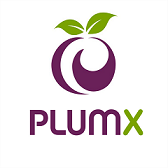The Nexus Between Women’s Access to Training and Household Food Security in Tharaka Nithi County, Kenya
Abstract
Food insecurity continues to pose a significant challenge in Kenya, particularly within the Arid and Semi-Arid Lands (ASALs) such as Tharaka Nithi County. Women’s access to training is widely recognised as a critical determinant of agricultural productivity and household food security, particularly in developing regions. Women are disproportionately affected due to limited access to training services. This study examined how women’s access to training (WAT) influences HFS in Tharaka Nithi County, Kenya. The study sample comprised 341 women participating in the Uwezo Fund and the Women Enterprise Fund (WEF), across three constituencies: Chuka Igamba Ng’ombe (143), Tharaka (99), and Maara (99). WAT was proxied by an 8-item scale, rated on a 5-point Likert scale from strongly disagree to agree strongly. Household food security had four outcomes, namely: Food accessibility proxied by the 18-item Household Food Insecurity Access Scale (HFIAS), food utilisation and dietary quality proxied by the Household Dietary Diversity Score (HDDS) scale, and food coping behaviour under food stress was proxied by a 9-item Coping Strategies Index (CSI). The HDDS and CSI were rated on a 5-point Likert scale from never to always. The HFIAS scale was rescaled into a 4-point food security classification of food secure, mildly food insecure, moderately food insecure, and severely food insecure groups. Data analysis was done using STATA Version 16. All the scales showed a strong internal consistency reliability, with Cronbach’s Alpha coefficients ranging from 0.864 to 0.939. The study adopted a correlational research design to establish how women’s access to training influences household food security. The simple linear regression results revealed that women’s access to training had a positive and statistically significant effect on HDDS, b = 0.097, p =0.025, and CSI, b = 0.089, p = 0.005. Qualitative insights revealed that training enhanced women’s financial literacy, agricultural skills, and household nutrition, better budgeting, production, and meal planning. The study concludes that women’s access to training improves household food utilisation and stability by strengthening knowledge and adaptive capacities rather than directly increasing food access. The study recommends integrating WEF and Uwezo Fund programs with county agricultural extension and local governance frameworks, decentralising training to community levels, tailoring content to women’s needs, and enhancing outreach through local centres and regular field visits to improve participation and sustain household food security in arid and semi-arid regions
Downloads
References
Ademola, A., Isaac, A., & Adeleke, O. (2021). Determinants of food security status and coping strategies to food insecurity among rural crop farming households in Ondo State, Nigeria. DOI: 10.9734/EJNFS/2021/v13i730435
Adubra, L., Savy, M., Fortin, S., Kameli, Y., Kodjo, N. E., Fainke, K., ... & Martin-Prevel, Y. (2019). The minimum dietary diversity for women of reproductive age (MDD-W) indicator is related to household food insecurity and farm production diversity: evidence from rural Mali. Current developments in nutrition, 3(3), nzz002. https://doi.org/10.1093/cdn/nzz002
Azeez, S. A. (2023). Factors Influencing Dietary Diversity Status of Rural Farming Households: A Case Study of Odeda Local Government, Ogun State, Nigeria.
Begum, I. A., Talukder, R. K., Kazal, M. M. H., & Alam, M. J. (2021). Landscape of enhanced access to social protection, safety nets and increased resilience in Bangladesh. In Agricultural economics. IntechOpen. DOI: 10.5772/intechopen.99270
Berkowitz, S. A., Drake, C., & Byhoff, E. (2024). Food insecurity and social policy: a comparative analysis of welfare state regimes in 19 countries. International Journal of Social Determinants of Health and Health Services, 54(2), 76- 86. https://doi.org/10.1177/27551938231219200
Demedeme, G., & Opoku, C. B. (2022). Economic empowerment of rural women: Assessing the effectiveness of the rural enterprise program (REP) in Ghana, West Africa. Journal of Agricultural Extension and Rural Development, 14(1), 13 23. https://doi.org/10.5897/JAERD2021.1287
Dooley, K. E., & Grady Roberts, T. (2020). Agricultural education and extension curriculum innovation: the nexus of climate change, food security, and community resilience. The Journal of Agricultural Education and Extension, 26(1), 1 3. https://doi.org/10.1080/1389224X.2019.1703507
Eseza, N., David, N., & Andrew, N. (2025). The Influence of Cooperative Financial Literacy, Training and Advisory Strategies on Women’s Financial Empowerment: A Review. Asian Journal of Economics, Business and Accounting, 25(3), 151 167. https://doi.org/10.9734/ajeba/2025/v25i31701
FAO (2007). Household Food Insecurity Access Scale (HFIAS) for Measurement of Household Food Access: Indicator Guide (v. 3). Food & Nutrition Technical Assistance (FANTA), Academy for Educational Development. Available at: https://www.fao.org/fileadmin/user_upload/eufao-fsi4dm/doc-training/hfias.pdf
FAO (2011). Guidelines for measuring household and individual dietary diversity. FAO.
Farrar, T. (2022). Handling heteroskedasticity in the linear regression model. https://hdl.handle.net/10566/14960
FEWS NET. (2023). East Africa food security outlook: Impacts of climate change and economic instability. Famine Early Warning Systems Network.
Food and Agriculture Organization of the United Nations. (2023, July 18). 122 million more people pushed into hunger since 2019 due to multiple crises, reveals UN report. https://www.fao.org/newsroom/detail/122-million-more-people-pushed-into-hunger-since-2019-due-to-multiple-crises--reveals-un-report/en
Garbero, A., & Jäckering, L. (2021). The potential of agricultural programs for improving food security: A multi-country perspective. Global Food Security, 29, 100529. https://doi.org/10.1016/j.gfs.2021.100529
Global Hunger Index (2025). Global Hunger Index – peer-reviewed annual publication designed to comprehensively measure and track hunger at the global, regional, and country levels. Retrieved October 23, 2025, from https://www.globalhungerindex.org/
Ikendi, S., Owusu, F., Masinde, D., Oberhauser, A., & Bain, C. (2023). Does participation in livelihood education programs impact household food security? A comparative study in rural Uganda. Journal of Agriculture, Food Systems, and Community Development, 13(1), 235- 265. https://doi.org/10.5304/jafscd.2023.131.009
Kaiser, T., & Lusardi, A. (2024). Financial literacy and financial education: An overview. DOI 10.3386/w32355
Mugenda, O. M., & Mugenda, A. G. (2003). Research methods: Quantitative & qualitative apporaches (Vol. 2, No. 2). Nairobi: Acts Press.
Nabuuma, D., Ekesa, B., Faber, M., & Mbhenyane, X. (2021). Food security and food sources linked to dietary diversity in rural smallholder farming households in central Uganda. https://doi.org/10.3934/agrfood.2021038
Nengovhela, R., Belete, A., Hlongwane, J. J., & Oluwatayo, I. B. (2022). Measuring rural households’ food consumption pattern using HHDS. A case of Mopani District Municipality, Limpopo province, South Africa. Journal of Agribusiness and Rural Development, 63(1), 15- 24. http://dx.doi.org/10.17306/J.JARD.2022.01513
Owoputi, I., Booth, N., Luginaah, I., Nyantakyi-Frimpong, H., Shumba, L., Dakishoni, L., ... & Kerr, R. B. (2022). Does crop diversity influence household food security and women’s individual dietary diversity? A cross-sectional study of Malawian farmers in a participatory agroecology and nutrition project. Food and Nutrition Bulletin, 43(4), 395- 411. https://doi.org/10.1177/03795721221126787
Panchol, M. A. (2021). Determinants of household dietary diversity among smallholder maize farmers in Uasin Gishu county, Kenya (Doctoral dissertation, University of Nairobi).
Rehman, K., & Mia, M. A. (2024). Determinants of financial literacy: a systematic review and future research directions. Future Business Journal, 10(1), 75. https://doi.org/10.1186/s43093-024-00365-x
Samantaraya, A. (2024). Diagnostic Tests in Regression Analysis. Basic Econometric Tools and Techniques in Data Analytics, 50.
Sanze, N., Bamfo, B. A., & Takyi, L. N. (2024). Intervention programs and women empowerment: the role of skills acquisition and development and financial independence. Journal of Enterprising Communities: People and Places in the Global Economy, 18(6), 1296 1312. https://doi.org/10.1108/JEC-03-2024-0038
Shakeel, A., & Shazli, T. (2021). Coping strategies and struggle against food insecurity: the case of district Banda in Bundelkhand region, India. GeoJournal, 86(4), 1721 1742. https://doi.org/10.1007/s10708-020-10155-x
Sly, B. C. (2021). Using Participatory Action Research Methods to Create Nutrition Education That Sustainably Improves Diet Diversity Through Women’s Empowerment (Doctoral dissertation, Colorado State University).
Tharaka Nithi County Government. (2024). County development plan and population statistics report.
Thu, M. (2019). The violation for assumptions of multiple regression model (ma may thu, 2019) (Doctoral dissertation, MERAL Portal).
Yamane, T. (1967). Statistics: An introductory analysis (2nd ed.). Harper & Row.
Copyright (c) 2025 Anita Mwende Mutegi, Anne Sande, PhD, Milcah Mulu-Mutuku, PhD

This work is licensed under a Creative Commons Attribution 4.0 International License.




























